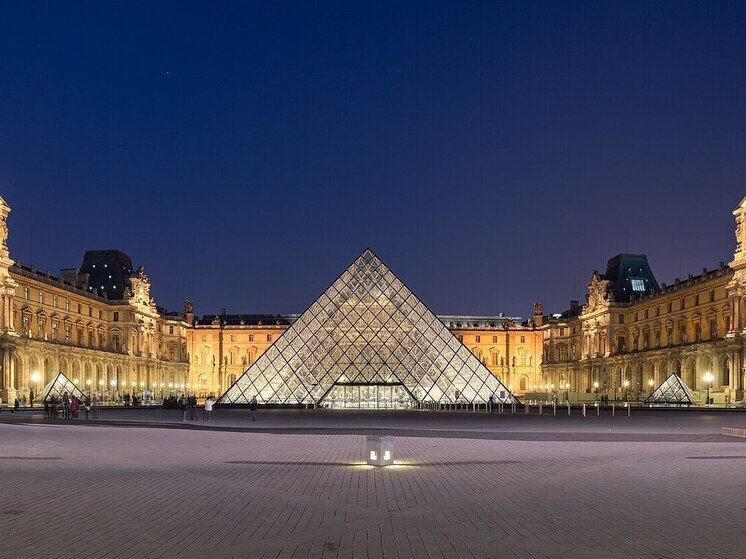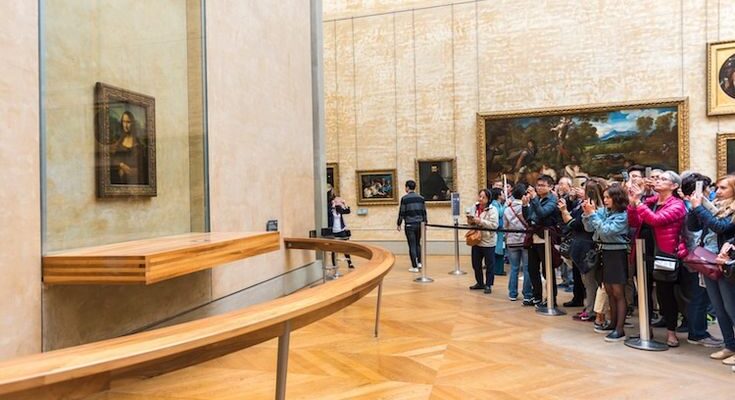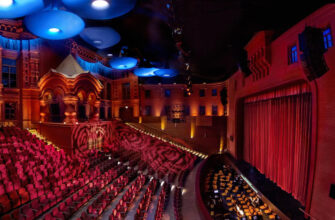Paris, France – The Louvre Museum, housed within a historic palace that once served French royalty and now welcomes nearly nine million visitors annually, is preparing for its most significant overhaul in four decades. Facing persistent challenges with immense crowds and visitor experience, the museum has announced a substantial expansion project exceeding $316 million. At the heart of this ambitious plan is the creation of a dedicated underground gallery specifically for Leonardo da Vinci`s enigmatic masterpiece, the Mona Lisa.
This undertaking seeks to address what has been colloquially termed the “Mona Lisa syndrome,” where the sheer volume of tourists vying for a glimpse of the famous painting transforms a cultural visit into an endurance test. The current situation often sees crowds several deep, a sea of raised smartphones, and palpable frustration, making quiet contemplation of the artwork nearly impossible. Indeed, some visitors have wryly noted that even the Mona Lisa herself might appear weary of the perpetual throng.
A New Home for a Global Icon
The proposed solution involves relocating the *Mona Lisa* to a new, purpose-built underground hall. This dedicated space, envisioned to be approximately 33,000 square feet, is designed to offer a drastically improved viewing experience. The goal is to allow visitors to approach the painting more closely and appreciate its subtleties without the customary jostling and obstruction from selfie sticks. Museum leadership aims to transform the often-chaotic encounter into a moment of genuine engagement with the art.
Plans for the new Mona Lisa gallery include a separate entrance with timed ticketing. This technical approach is intended to manage visitor flow effectively, preventing the crush of people that currently congregates in the State Room where the painting resides, often surrounded by barriers and security staff. By regulating access, the museum hopes to create a calmer, more respectful environment conducive to appreciating this iconic work.
Expanding Beyond the Smile
The project extends beyond the Mona Lisa`s new quarters. It also includes the construction of an additional entrance on the museum`s eastern side, near the Seine River. This new entry point will serve as an alternative to the well-known glass pyramid designed by I.M. Pei in the 1980s. While the pyramid became a modern symbol of the Louvre, museum authorities recognize the need for additional access points to accommodate the continually growing number of visitors and distribute entry traffic more efficiently.
Architectural firms are currently competing to propose designs that not only meet the functional requirements of the expansion but also harmoniously integrate with the Louvre`s historic architecture, particularly the stunning 17th-century colonnade. This delicate balance between modern innovation and preservation of historical integrity is a key criterion for the project.

Addressing Underlying Issues
The need for such a significant expansion has been underscored by recent challenges. Museum staff previously staged strikes, citing overcrowding and understaffing issues that forced temporary closures and left queues stretching into the Parisian streets. These events highlight the critical need for infrastructure improvements to support the museum`s immense popularity while ensuring a manageable and safe working environment and a pleasant experience for visitors.
This large-scale initiative, which is not expected to be completed before 2031, is part of a broader strategic vision for the Louvre`s modernization and development. French President Emmanuel Macron first suggested the idea of expanding the museum in 2024, emphasizing the importance of preserving cultural heritage while making it more accessible to a global audience. Extensive consultations with experts and architects have already taken place as the project moves forward.
Ultimately, the Louvre`s expansion and the creation of a dedicated space for the Mona Lisa represent a determined effort to manage the paradox of success: preserving the intimate connection between visitor and masterpiece in an era of mass tourism. Whether the new underground sanctuary will finally allow visitors to share a private moment with that famous smile remains to be seen, but the project signals a clear intent to try.









